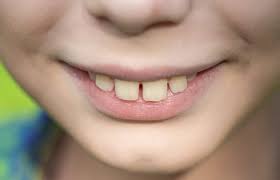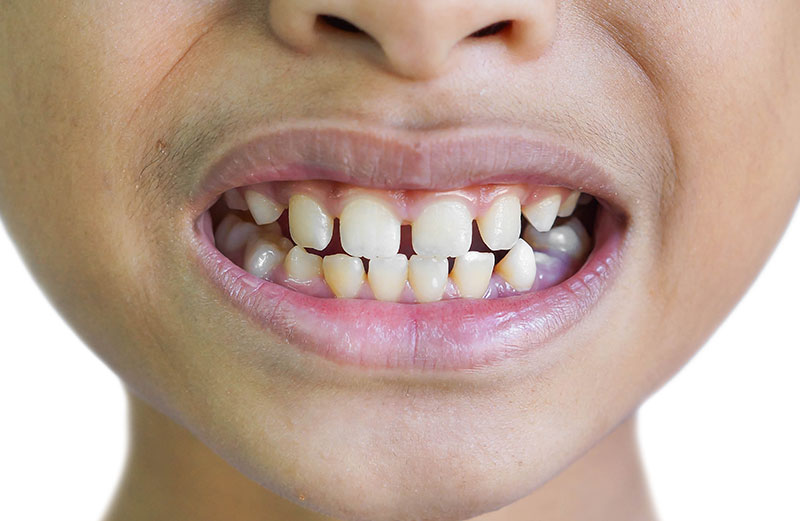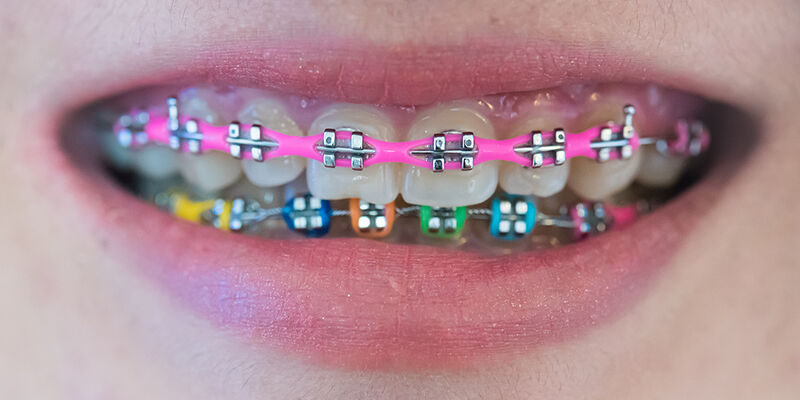How to reduce gap between teeth naturally at home

Gaps between teeth, also known as diastemas, can be a source of self-consciousness for many people. While professional dental treatments are available to close these gaps, some individuals prefer to explore natural, at-home methods. This comprehensive guide covers various techniques and practices that may help reduce the gap between teeth naturally at home. It’s important to note that while these methods may offer improvements, they may not be as effective or permanent as professional treatments. Consulting a dentist for personalized advice is always recommended.
Understanding Gaps Between Teeth
What is a Diastema?
A diastema is a space or gap between two teeth, commonly occurring between the upper front teeth but also seen in other areas of the mouth. These gaps can result from various factors, including genetics, habits, and dental health issues.
Causes of Gaps Between Teeth
- Genetic Factors: Inherited traits, such as the size of teeth and jaw, can lead to gaps.
- Tooth Size Discrepancies: Differences in tooth size can create spaces.
- Frenulum Attachment: An enlarged labial frenulum can push teeth apart.
- Habits: Thumb sucking, tongue thrusting, and prolonged pacifier use.
- Periodontal Disease: Gum disease can cause bone loss and tooth movement.
- Improper Swallowing Reflex: Incorrect swallowing patterns can push teeth apart.
Natural Methods to Reduce Gap Between Teeth
While these methods can be helpful, they may not provide dramatic results, especially for larger gaps or more complex dental issues. Always consult with a dentist before starting any at-home treatment.
1. Orthodontic Bands
Procedure: Orthodontic bands, often called dental bands, are small rubber bands that can be placed around teeth to gradually pull them together. These bands are typically used to close minor gaps between teeth.
How to Use:
- Purchase orthodontic bands from a pharmacy or online.
- Place the band around the teeth you want to move closer together.
- Wear the band for several hours a day, preferably overnight.
Caution:
- Ensure the bands are not too tight to avoid damaging the teeth or gums.
- Monitor for any discomfort or signs of infection and discontinue use if necessary.
2. Tongue Exercises
Procedure: Certain exercises can help reduce gaps caused by tongue thrusting, where the tongue pushes against the teeth during swallowing or speaking.
Exercises:
- Tongue Press: Press the tip of your tongue against the roof of your mouth and slide it backward. Repeat this exercise multiple times daily.
- Swallow Correction: Practice swallowing while keeping your tongue away from your teeth. This can be done by placing your tongue on the roof of your mouth and then swallowing.
Benefits:
- Helps correct tongue posture and swallowing patterns.
- Can gradually reduce pressure on the teeth, allowing them to move closer together.
3. Oil Pulling
Procedure: Oil pulling is an ancient practice that involves swishing oil (usually coconut oil) in the mouth to improve oral health.
How to Use:
- Take a tablespoon of coconut oil and swish it around your mouth for 15-20 minutes.
- Spit out the oil and rinse your mouth with warm water.
Benefits:
- Reduces harmful bacteria in the mouth, promoting overall dental health.
- While it may not directly close gaps, maintaining healthy gums and teeth can support other treatments.
4. Dietary Changes
Procedure: A balanced diet rich in vitamins and minerals can promote dental health and potentially aid in reducing gaps.
Nutrients to Focus On:
- Calcium: Strengthens teeth and bones. Found in dairy products, leafy greens, and fortified foods.
- Vitamin D: Helps in calcium absorption. Found in fatty fish, egg yolks, and sunlight exposure.
- Vitamin C: Supports gum health. Found in citrus fruits, berries, and vegetables.
- Phosphorus: Strengthens teeth. Found in meat, dairy, nuts, and seeds.
Benefits:
- Promotes overall dental health and strengthens teeth.
- Healthy gums and teeth are less likely to develop or worsen gaps.
5. Corrective Dental Tools
Procedure: Using over-the-counter dental tools can help in aligning teeth and closing gaps.
Tools:
- Dental Wax: Can be used to temporarily fill gaps and prevent irritation from sharp edges.
- Dental Floss: Helps maintain oral hygiene and prevents gum disease, which can contribute to gaps.
Benefits:
- Prevents gum disease and tooth decay.
- Keeps teeth and gums healthy, supporting other gap-closing methods.
6. Myofunctional Therapy
Procedure: Myofunctional therapy involves exercises that target the muscles of the mouth, face, and neck to improve oral posture and function.
Exercises:
- Lip Exercises: Press your lips together tightly and hold for a few seconds. Repeat multiple times daily.
- Cheek Exercises: Puff out your cheeks and move the air from one side to the other. Repeat several times.
Benefits:
- Improves muscle tone and function.
- Helps correct habits like tongue thrusting, which can cause gaps.
7. Regular Dental Care
Procedure: Maintaining good oral hygiene is crucial for preventing and reducing gaps between teeth.
Practices:
- Brush your teeth at least twice a day with fluoride toothpaste.
- Floss daily to remove plaque and food particles between teeth.
- Use an antimicrobial mouthwash to reduce bacteria.
Benefits:
- Prevents gum disease and tooth decay.
- Keeps teeth and gums healthy, supporting other treatments.
8. Herbal Remedies
Procedure: Certain herbs and natural remedies can promote gum health and potentially help in reducing gaps.
Remedies:
- Aloe Vera: Apply aloe vera gel to the gums to reduce inflammation and promote healing.
- Tea Tree Oil: Dilute tea tree oil with water and use as a mouthwash to reduce bacteria and support gum health.
- Green Tea: Drink green tea regularly to benefit from its anti-inflammatory and antibacterial properties.
Benefits:
- Promotes overall oral health.
- Reduces inflammation and supports healthy gums.
9. Using Dental Appliances
Procedure: Dental appliances like mouthguards or retainers can help maintain teeth alignment and potentially reduce gaps.
Appliances:
- Retainers: Can be used to hold teeth in their new position after orthodontic treatment and prevent gaps from reappearing.
- Mouthguards: Custom-made mouthguards can protect teeth from grinding and other forces that cause gaps.
Benefits:
- Helps maintain teeth alignment.
- Prevents further movement of teeth that can create gaps.
Factors to Consider When Using Natural Methods
Severity of the Gap
Natural methods may be more effective for smaller gaps. Larger gaps often require professional treatment.
Consistency and Patience
Natural methods usually require consistent effort and time to show results. Patience is key.
Underlying Causes
Identifying the cause of the gap is crucial. If the gap is due to habits or health issues, addressing these root causes is essential.
Professional Consultation
Even when using natural methods, consulting a dentist for personalized advice is recommended. They can provide guidance and monitor progress.
When to Seek Professional Help
Ineffectiveness of Natural Methods
If natural methods do not show improvement, seeking professional treatment is advisable.
Complex Dental Issues
For gaps caused by complex issues like missing teeth or severe misalignment, professional dental treatments are necessary.
Long-Term Solutions
Professional treatments like braces, Invisalign, veneers, and dental implants provide more permanent and reliable solutions for closing gaps.
Conclusion
Reducing the gap between teeth naturally at home involves a variety of methods, including orthodontic bands, tongue exercises, oil pulling, dietary changes, corrective dental tools, myofunctional therapy, regular dental care, herbal remedies, and dental appliances. While these methods can be effective for minor gaps, it is essential to be consistent and patient. For larger gaps or more complex dental issues, professional consultation and treatment are recommended.
Maintaining good oral hygiene and addressing underlying causes of gaps are crucial steps in achieving a healthy, beautiful smile. If you’re concerned about gaps between your teeth, start with natural methods but don’t hesitate to seek professional advice for the best results.
Related to read:
Best Oral Hygiene Practices For Optimum Oral Health.
How to Whiten Teeth Naturally?
How to keep your gums healthy and disease-free?
References
To ensure the information provided is accurate and up-to-date, the following sources were referenced:
- American Dental Association. (n.d.). Plaque and Tartar. Retrieved from ADA website
- Mayo Clinic. (n.d.). Dental Plaque. Retrieved from Mayo Clinic website
- National Institute of Dental and Craniofacial Research. (n.d.). Periodontal (Gum) Disease. Retrieved from NIDCR website
How Can I Close My Teeth Gap Naturally?
Closing a teeth gap naturally often involves adopting certain habits and techniques that can encourage the teeth to move closer together over time. Here are some natural methods you can try:
1. Orthodontic Bands
Orthodontic bands, also known as dental bands, can be used to gradually pull teeth together. These small rubber bands are placed around the teeth that need to move closer. Here’s how you can use them:
- Purchase orthodontic bands from a pharmacy or online.
- Place the band around the two teeth you want to move closer.
- Wear the band for several hours a day, preferably overnight.
- Ensure the bands are not too tight to avoid damaging the teeth or gums. Monitor for any discomfort or signs of infection and discontinue use if necessary.
2. Tongue Exercises
Improper tongue posture and swallowing patterns can contribute to gaps between teeth. Practicing specific tongue exercises can help:
- Tongue Press: Press the tip of your tongue against the roof of your mouth and slide it backward. Repeat this exercise multiple times daily.
- Swallow Correction: Practice swallowing while keeping your tongue away from your teeth. This can be done by placing your tongue on the roof of your mouth and then swallowing.
3. Oil Pulling
Oil pulling is an ancient practice that involves swishing oil (usually coconut oil) in the mouth to improve oral health. While it may not directly close gaps, it promotes overall dental health:
- Take a tablespoon of coconut oil and swish it around your mouth for 15-20 minutes.
- Spit out the oil and rinse your mouth with warm water.
4. Dietary Changes
A balanced diet rich in vitamins and minerals supports dental health and may help reduce gaps:
- Calcium: Strengthens teeth and bones. Found in dairy products, leafy greens, and fortified foods.
- Vitamin D: Helps in calcium absorption. Found in fatty fish, egg yolks, and sunlight exposure.
- Vitamin C: Supports gum health. Found in citrus fruits, berries, and vegetables.
- Phosphorus: Strengthens teeth. Found in meat, dairy, nuts, and seeds.
5. Regular Dental Care
Maintaining good oral hygiene is crucial for preventing and reducing gaps between teeth:
- Brush your teeth at least twice a day with fluoride toothpaste.
- Floss daily to remove plaque and food particles between teeth.
- Use an antimicrobial mouthwash to reduce bacteria.
How Can I Make My Teeth Gap Smaller?
Making your teeth gap smaller can often be achieved through consistent and natural methods that encourage the teeth to move closer together:
1. Orthodontic Bands
Using orthodontic bands can be effective for making teeth gaps smaller:
- Place the bands around the teeth you want to bring closer together.
- Wear them regularly for several hours a day.
2. Myofunctional Therapy
Myofunctional therapy involves exercises that improve tongue posture and function, helping to reduce gaps:
- Lip Exercises: Press your lips together tightly and hold for a few seconds. Repeat multiple times daily.
- Cheek Exercises: Puff out your cheeks and move the air from one side to the other. Repeat several times.
3. Herbal Remedies
Certain herbs can promote gum health and potentially help reduce gaps:
- Aloe Vera: Apply aloe vera gel to the gums to reduce inflammation and promote healing.
- Tea Tree Oil: Dilute tea tree oil with water and use it as a mouthwash to reduce bacteria and support gum health.
- Green Tea: Drink green tea regularly to benefit from its anti-inflammatory and antibacterial properties.
4. Preventive and Behavioral Approaches
Addressing habits that contribute to gaps can help make them smaller:
- Thumb Sucking Prevention: Techniques to discourage thumb sucking, such as using positive reinforcement or thumb guards.
- Tongue Thrust Therapy: Myofunctional therapy to retrain the tongue and correct swallowing patterns.
- Pacifier Use: Limiting or discontinuing the use of pacifiers after infancy.
How to Fill Space Between Teeth?
Filling the space between teeth can be approached with a variety of natural methods, although professional treatments are often more effective for larger gaps:
1. Dental Wax
Dental wax can temporarily fill spaces and prevent irritation from sharp edges:
- Apply dental wax to the gap between your teeth to fill the space temporarily.
- This can help you get used to the idea of no gap and see how it might look once permanently closed.
2. Orthodontic Bands
As mentioned earlier, orthodontic bands can gradually bring teeth closer together:
- Wear the bands around the teeth you want to move closer for several hours daily.
3. Oil Pulling
Regular oil pulling can maintain healthy gums and teeth, supporting other treatments:
- Swish coconut oil in your mouth for 15-20 minutes daily to reduce harmful bacteria and improve oral health.
4. Dietary Support
Eating a diet rich in nutrients that support dental health can help fill spaces naturally:
- Ensure your diet includes adequate calcium, vitamin D, vitamin C, and phosphorus to strengthen teeth and gums.
How to Close a Gap in Your Teeth Without Braces?
Closing a gap in your teeth without braces can be achieved through various non-invasive methods, especially for minor gaps:
1. Dental Bonding
Dental bonding is a cosmetic procedure where a tooth-colored resin is applied to the teeth to close the gap. While it is a professional treatment, it is less invasive than braces:
- The resin is molded and shaped to match your natural teeth and then hardened with a special light.
- This procedure can usually be completed in one visit and is relatively affordable.
2. Clear Aligners
Clear aligners, such as Invisalign, can gradually move teeth to close gaps without the need for traditional braces:
- These aligners are custom-made to fit your teeth and are virtually invisible.
- They can be removed for eating and cleaning, making them a convenient option.
3. Porcelain Veneers
Porcelain veneers are thin shells that are bonded to the front surface of your teeth to improve their appearance and close gaps:
- Veneers are custom-made to fit your teeth and provide a natural-looking result.
- They are a more permanent solution compared to bonding.
4. Dental Crowns
Dental crowns can cover the entire tooth, restoring its shape and appearance while closing gaps:
- Crowns are custom-made and can be used to close larger gaps or gaps caused by damaged teeth.
- The procedure typically involves multiple visits and is more invasive than bonding or veneers.
5. Myofunctional Therapy and Tongue Exercises
For gaps caused by improper tongue posture or swallowing patterns, myofunctional therapy can be effective:
- Regular exercises can correct tongue thrusting habits and improve oral posture, helping to close gaps over time.
6. Using Orthodontic Bands
As mentioned earlier, orthodontic bands can be used to close gaps without braces:
- Wear the bands around the teeth you want to move closer for several hours daily.
Conclusion
While natural methods and less invasive treatments can help reduce and close gaps between teeth, the effectiveness largely depends on the size of the gap and the underlying cause. For minor gaps, orthodontic bands, myofunctional therapy, and maintaining good oral hygiene may yield noticeable results. However, for more significant gaps or complex dental issues, professional treatments like bonding, veneers, crowns, or clear aligners may be necessary. Always consult with a dental professional to determine the best approach for your specific needs and to ensure optimal dental health.








